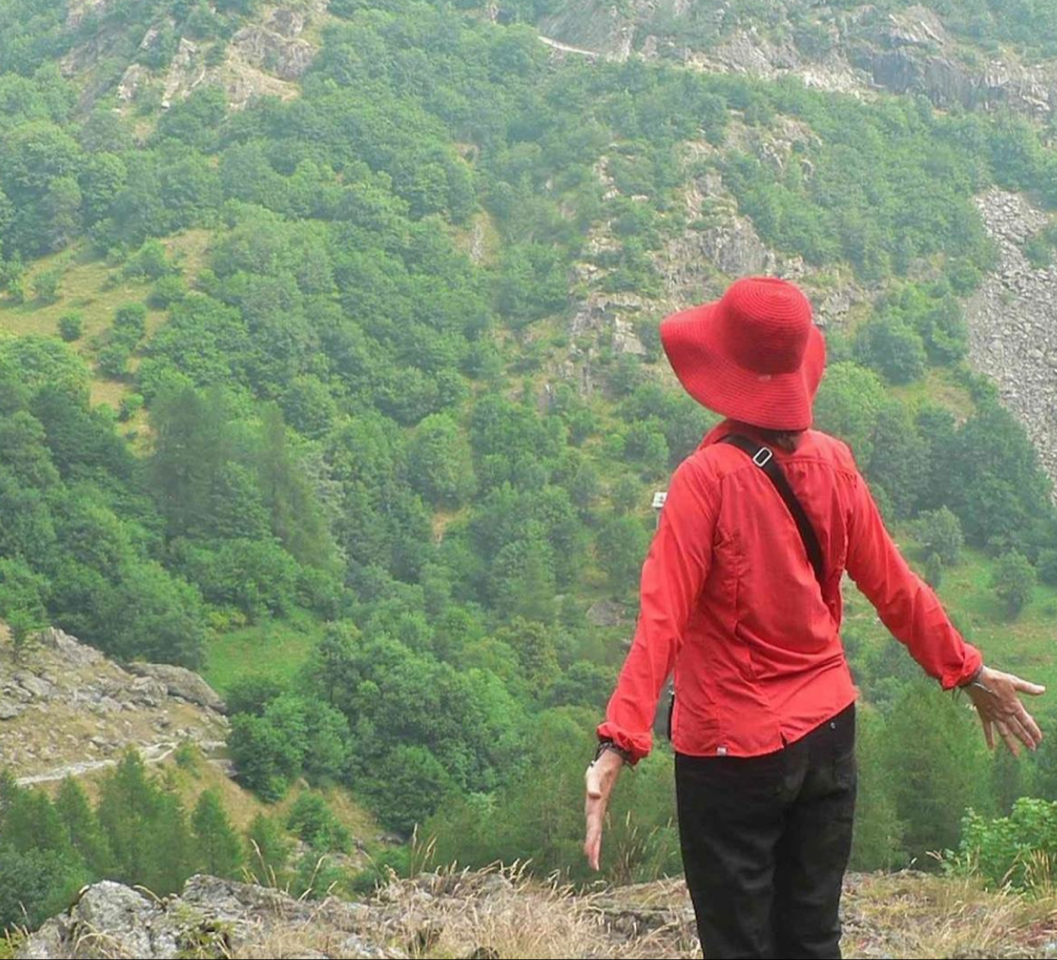With Where am I? A dislocated soundwalk, Viv Corringham, questions where our mind wanders off to when we walk. Are we here, walking, or are we there, lost in thought?
Where am I?… is one of the shortlisted pieces in the Sound Walk September Awards 2021. Here, Viv talks about her work.
Where are we when we walk? Are we here, in this place that our feet move through, or are we somewhere else, lost in thoughts and memories of other times and places? This playful and dream-like soundwalk aims to throw these questions into confusion. It can be done anywhere including indoors.
Each person takes a familiar walk while listening to this audio guide and we find ourselves in the unfamiliar: wandering through unlikely terrain, listening to creatures and soundscapes that do not belong together, with a description of a route that moves between city and countryside, even passing through a Tokyo train station to a Long Island beach. Accompanying this misguidance are fragments of my singing and sometimes a remark from someone in one of the places. Listening prompts and questions may trigger memories (eg “Can you remember a sound from your childhood?”), imagination (eg “Can you imagine the sound of raindrops building to a storm?”), or a sense of being in the present moment (eg “What is the quietest sound you can hear now?”).
This walk arises from the pandemic experience, remembering those places we could not visit and our pent-up need for adventure. “Where am I” celebrates feeling lost and confused by this world as it tentatively begins to reopen and we bring ourselves into a new here and now.
The sounds heard on this walk were recorded on my walking projects with people in many countries.
I am a vocalist and walking sound artist. I studied with composer Pauline Oliveros for a certificate to teach her practice of “Deep Listening”, and listening is at the heart of my musical work and my soundwalks.
While walking I find that open, non-judgemental listening to the environment can bring me into the present moment and help me experience the essence of a walk.
However, despite my intention to have this meditative, listening presence, I often notice that several minutes have passed in which I disappeared somewhere and was not paying attention. During that time I drifted away on a stream of thoughts, memories and associations. When I become aware of these lapses I deliberately focus on listening and breathing in order to return to the walk, just one foot in front of the other.
Yet these internal wanderings can be very pleasurable, carrying me away to remembered walks in other times. For the last twenty years my project Shadow-walks has caused me to travel widely, walking with other people on their chosen walks which I record and later repeat by myself, singing a response to my memory of the walk. Because of this I have built up a large library of walks – in recorded form and also in my memory, some of which are shared in “Where am I”.
The piece is a celebration of these mind drifts.
I have long been interested in dislocated and interrupted walks. I enjoy the work of Janet Cardiff whose walks describe both real and imagined places or events and who may suddenly abandon us at Liverpool Street Station or direct us through doors marked “No entry”.
In 2001 I created a guided soundwalk for headphones along a route that followed London’s River Lea. After a while the walk suddenly took a sonic detour through a market in a Turkish village, which I had previously recorded. The accompanying map showed the diversion as if it really existed beside the Lea.
Then in 2005 I was invited to create a soundwalk for “Strange Strolls”- a festival of sound adventures in the port suburb of Fremantle, Australia. I was sent a map of where the walk would occur, with estimated walk-times shown for each section. Over this I superimposed a map of central London and I walked there, describing what I saw, with a background of busy London street sounds. This became the incongruous soundscape for the walk in Fremantle.
In 2019 I returned to this idea while in Bangalore, India. I created a live soundwalk where I led an unsuspecting group of participants through a park in which my students staged slightly odd situations and actions or played recordings of unlikely animals and birds.
I hope that the displaced walks in “Where am I” will allow the listener to access their own half-remembered and imagined journeys in that liminal threshold between reality and daydream.
Viv’s article is the sixth in a series of the artists shortlisted for the Sound Walk September 2021 Awards talking about their work.


